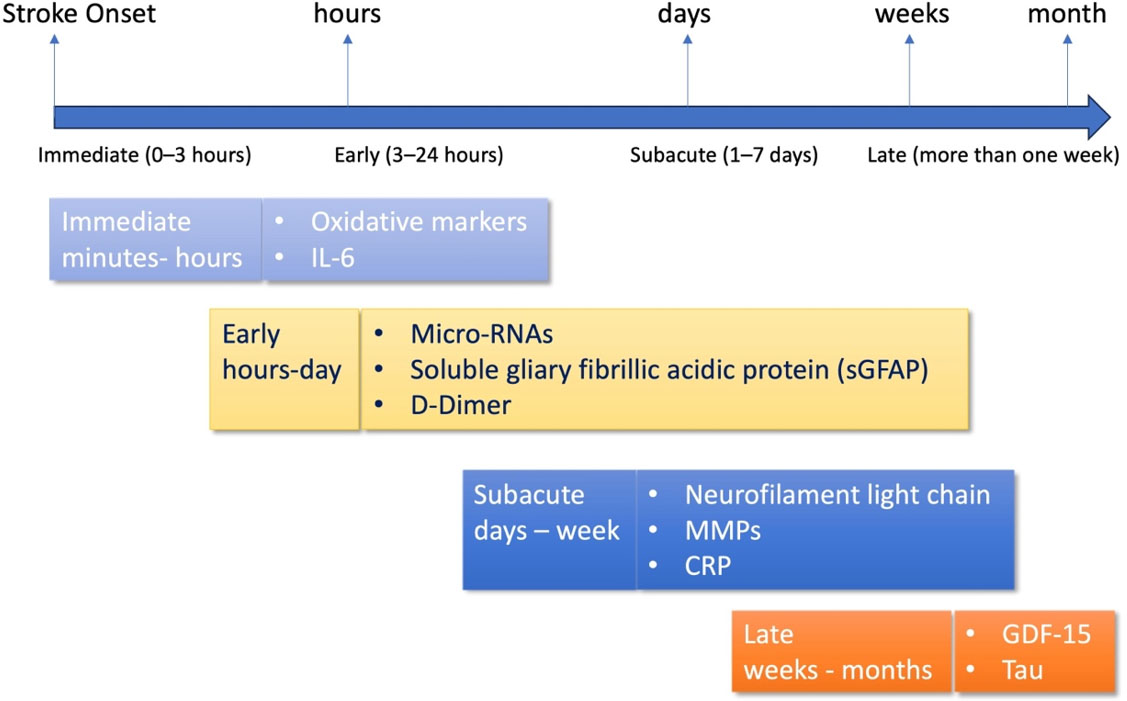fig2
Figure 2. Timing of Biomarker Detection in Ischemic Stroke. The time course of biomarker detection is shown following the onset of ischemic stroke: immediate (0-3 h), early (3-24 h), subacute (1-7 days), and late (more than one week). The rapid appearance of reactive oxygen species and IL-6 characterizes early inflammatory and oxidative stress reactions. In 0-3 h, GFAP, microRNAs (e.g., miR-124), and D-dimer levels increase. This enables subtype differentiation of stroke. Subacute phase biomarkers, such as CRP, sNfL, and MMPs, indicate ongoing neuroinflammation, tissue damage, and axonal injury. During the late phase, chronic increases in GDF-15 and tau protein correlate with chronic damage and long-term prognosis.








